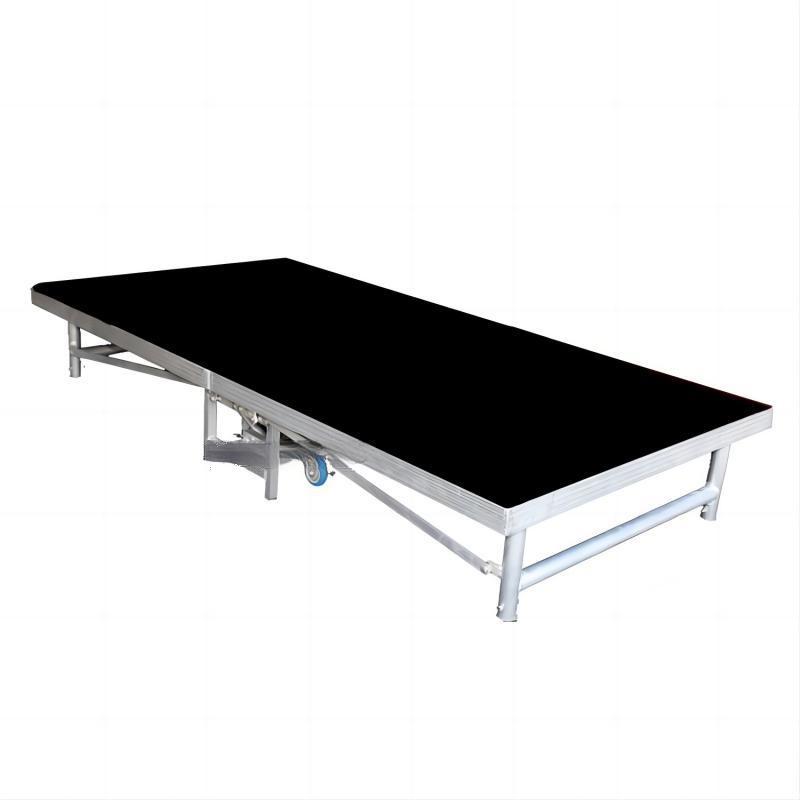What Are You Looking For?
Construction:
The frame is engineered for stability and strength, with welded or bolted connections for maximum integrity.
Legs are designed to provide adjustable height settings, allowing the stage to be set up on various surfaces and adjusted to different heights to suit the needs of different events.
Cross braces and support bars enhance the overall stability of the stage, ensuring a secure platform for performers and equipment.
1.22*2.44m(4x8ft) H:0.41-0.61m
|
material
|
Aluminum 6061-T6 / Supervisor: 50x3mm
|
|||
|
Unit stage size (length x width)
|
1.22x2.44m (4x8ft) or 1.83X2.44M (6x8ft)
|
|||
|
height
|
A: 0.4-0.6m
B: 0.6-0.8M
|
|||
|
Ingredient
|
Thickness: 18mm
Plywood topping: red, black, brown
|
|||
|
Load capacity
|
500kg / square meter
|
|||
|
Advantage
|
It is foldable, easy to transport and store, design is sample, easy to install, economic cost, load cavity, structural stability.
|
|||
Frame:
Legs: Vertical supports that hold up the stage platform. They are usually adjustable in height to accommodate different venue requirements.
Cross Braces: Horizontal bars that connect the legs, providing stability and reinforcement to the frame structure.
Locking Mechanisms: Secure the frame in the open position during use and allow for easy folding and unfolding. They ensure safety and stability during performances.
Platform:
Deck Panels: Large sections of the platform, typically made of sturdy materials like plywood or aluminum. They provide the surface area for performers and equipment.
Non-Slip Surface: Applied to the platform to ensure the safety of performers, even in wet or slippery conditions.
Hinges: Mechanisms that enable the platform to fold and unfold smoothly.
